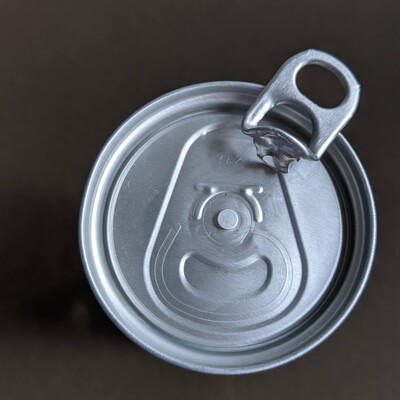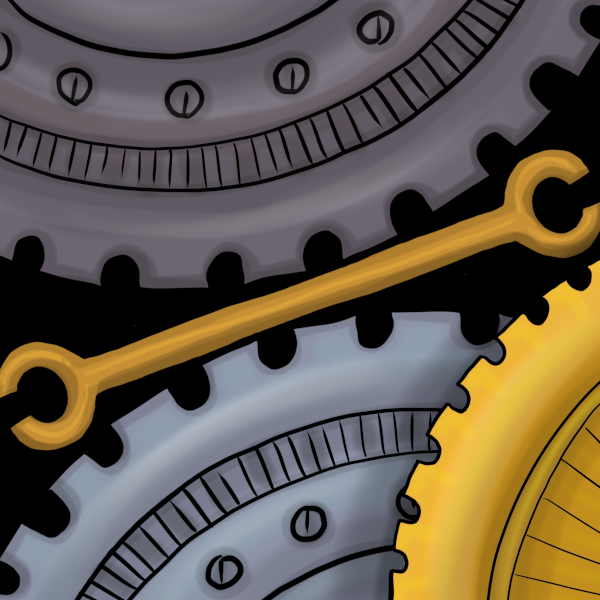Tire rubber accounts for about 25-30% of all microplastic emmission on land. But we are talking about Q-tips and putting filters into washing machines, because the car lobby successfully stirred the discourse away from themselves.
@tryptaminev @mondoman712 How very true, not to mention the particulate air pollution which comes from vehicle tyres
@tryptaminev if we all switch to e-bikes, does this mitigate/remove the problem?
Pretty much. The tire abrasion is dependant on the weight and the speed of the vehicle. So unless your e-bike weighs multiple tons and reaches speeds of >100km/h, it will be much better than a car.
@squaresinger thanks. That’s what I figured. Maybe we can go back to cars with 1920s weight, speed and tire size
Kinda, yeah, that would help. A Ford Model T had 540-750kg weight, and a top speed of 67km/h. That’s significantly lower than modern cars.
But a Ford Model A from 1928 already had 954-1144kg and was able to reach 104km/h, which is not too far off from the regular operating values of a small modern car.
If you’d use modern materials and engines, it wouldn’t be hard to make a 500kg empty mass car with a top speed of 50-70km/h that fits 5 people, uses hardly any energy to move it and has very little tire abrasion.
If there were no heavy and dangerous cars around that you need to be protected from, something like an electric autorickshaw would be a perfectly adequate city vehicle.
@tryptaminev and that no matter what motor they carry 😬 #microplastic #tires https://phys.org/news/2022-11-unraveling-secrets-microplastics.html @mondoman712
It’s probably even worse with EV-s since they’re heavier than ICE cars of similar class/size.
@Shurimal urgh yes that definitely sounds worse :/ @mondoman712 @tryptaminev
@mondoman712 No, they don’t. Go read one of the rebuttals. The original, occasionally repeated pseudo-study claimed that tyres and brakes cause *hundreds* of times more particulate pollution than exhaust. This is physically impossible as both would wear down much faster than is observed.
See e.g.:
https://www.youtube.com/watch?v=aar8njoGgNYAlso this thread (use the Internet Archive):
https://twitter.com/MatthewToad42/status/1532728307908763650
https://twitter.com/MatthewToad42/status/1596861715547066370
https://twitter.com/KateFantom/status/1542246513329508352
I’m not saying tyres and brakes aren’t a problem. Certainly we need to improve on them. And we need to reduce the number of cars.
But they’re not as big as problem as claimed in these dubious pseudo-studies. Otherwise we’d be replacing tyres rather more often than we do.
This is just pro-petrol propaganda.
Thanks for the info, your links all seem to cover the Emissions Analytics claim, but this article also mentions research from California which seems to have much more realistic numbers.
I think if you look at the community that I posted this to, you might see that I’m not interested in electric vs ICE, just fewer cars.
@mondoman712 I can’t read the article at the moment as it’s paywalled. I assumed it was yet another repeat of the Emissions Analytics BS since there seem to be a few about. If there is new, credible, peer reviewed work on this, then that’s a good thing and I’m sorry for dismissing it.
I believe there is a risk of perfect vs good. A small number of people will need cars long term for various reasons (equipment and some disabilities). Cars, vans, buses, and residual road freight, will need to be electric.
But most of what we need to do to get to that point i.e. making cities more accessible, safer, etc, will take significant time, construction work, political challenges and social attitude changes. We will need to change attitudes to cars, attitudes to women, BAME and disabled people. We will need to build a lot more housing (bikes don’t work if you can’t afford to live nearby). We will need to build segregated cycle lanes, move retail businesses around, and very possibly increase density. Carrots and sticks work, and the transformation of e.g. Paris is inspiring, but as with all such changes it’s hard-fought; shopkeepers will oppose even simple easy wins like converting on-street parking to bike lanes. And many people have good reason to fear public transport (of course, many people don’t have a choice; the assumption that the important people / the majority drive is a problem in itself). Making cities accessible to disabled people with mobility issues will also take time and a lot of work. For long haul, new train lines take decades.
My point is while we may be able to reduce miles driven by 30% or so with improved bus services, getting to 80% will probably take decades.
We can’t ban cars overnight, but there’s a lot we *can* do relatively quickly (especially on buses), and a lot that we need to make a start on.
I would not be surprised if tyres were responsible for a significant fraction of the microplastics problem. Which is just another reason why a society with fewer cars would be a better one, although it should be possible to improve tyres relatively quickly as there hasn’t been much work on them until recently and they have to be replaced regularly anyway.
Given the difficulties getting to a non-car-obsessed society, and the needs of the developing world, the peak number of EVs might well be similar to the number of cars now. Degrowth is vital but not a magic bullet any more than EVs are. Degrowth is part of an overarching socialist framework, but while some demand reduction measures can be implemented quickly, many will take longer.
Audiences change. People *will* weaponise such claims to discourage *any* action.
Anyway, thanks, and good luck.
I don’t see a paywall, but you could try https://12ft.io/https://www.washingtonpost.com/climate-environment/2023/07/09/tire-brake-tailpipes-emissions-pollution-cars/ or archive.org
I do realise all of the things you said, you should browse this community some more. It isn’t about banning cars completely, more complaining about the issues with them and advocating for alternatives, which based on your comment you seem to be interested in.
The mass loss between a new tire and a bald one would indicate over a liter of rubber goes somewhere, none of the options are particularly good.
The good option is lighter vehicles and fewer miles travelled by road.
Maybe if we reduced the number of wheels to two and made them skinny it would also help. Since it’s light, we could probably move it with our own power instead of an engine.
The benefit is that we would also get some fresh air and exercise.
I hope something like this gets invented some day but I suppose one can only dream.
Sounds amazing and I hope one gets invented, but there is another solution as well:
You could make the wheels out of steel and run them on a narrow road also made of steel instead of oil byproducts, so they would wear out much slower, and any dust would be similar to naturally ocurring iron oxides (becoming relatively inert once it mixed with mud even if there was still some respiratory risk). It would be better suited to higher speeds and big loads and would compliment the other invention (maybe you could even put the small two wheeled car on the big steel wheeled car). Some kind of self-driving system would also be necessary to keep everyone safe
One could only dream such a thing existed. I’d name it steely wheel booo booooo fire eyes.
edit: replies have pointed out that they probably mean “particulate pollution” throughout the piece, and are maybe being a little loose with using synonyms like “emissions” to mean the same thing. Fair enough I suppose. The whole climate change destroying the earth thing, and the well-funded denial machine that has come with it, has maybe left me a bit sensitive, but I think people should be pretty damn careful with their words when writing things like this in the Washington Post:
In California, sources other than tailpipes are the dominating source of traffic emissions. A lot of pollution comes from road dust, kicked up from cars driving along the road. In recent years, particulate emissions from brakes and tires are starting to grow as well, even outweighing those from tailpipes in some locations.
This analysis seems wrong.
In one study, Jung and his colleagues looked at car emission sources along two highways in Long Beach and Anaheim in January and February 2020. In Anaheim, they found brake and tires constituted 30 percent of PM 2.5, whereas exhaust emissions linked to gasoline and diesel constituted 19 percent. In Long Beach, brake and tires constituted 15 percent of PM 2.5 pollution, which was the same as pollution from gas and diesel.
So they are collecting air samples near highways and figuring out where it came from? Okay that seems a reasonable thing to do, but that experimental design does not seem to actually support this claim from the preceding paragraph:
In California, sources other than tailpipes are the dominating source of traffic emissions.
It must mean that tire and brakes emissions stick around longer, which is very plausible, but a different thing. It cannot be that they are dominating emissions, because that would mean they’ve found experimental evidence against the conservation of mass. You burn a gallon of gas every ~15 miles. That doesn’t just disappear; it creates a similar amount of emissions. Whereas you lose at most a couple gallons of material on a tire over the course of its entire life, and brake pads even less so – you probably don’t go through a gallon of brake pad material in a car’s lifetime. A single tank of gas is probably as much matter as all four tires will lose in their lifetime.
We’re talking orders of magnitude here. This interpretation of the results seems misleading. Maybe the editorial writer here should be saying something like: Study suggests tire and brake dust lingers longer than tailpipe emissions, and could have a bigger effect on the local population.
Most of the combustion products from gas are ‘clean’ - water and CO2. They don’t contribute to particulate air pollution.
CO and NOx are output in much smaller quantities, and are contributors to air pollution, but not to particulate air pollution.
From the tailpipe, the only real particulate matter is a very small amount of soot, and this is a small fraction of the overall combusted mass - engines are designed to minimize soot in order to increase performance and fuel efficiency.
Tires and break pads, in contrast, simply abrade into the air essentially in their entirety.
Most of the combustion products from gas are ‘clean’ - water and CO2. They don’t contribute to particulate air pollution.
Yea totally, that’s why I suggested the rewrite that I did. It seems a bit nuts to exclude CO2 from the phrase:
In California, sources other than tailpipes are the dominating source of traffic emissions"
… when CO2 emissions are like ending life on earth as we know it.
A lot of things are ending life on earth as we know it. CO2 emissions are just one of them. It’s like the stupid argument that plastic bags are fine because a hundred plastic bags emit less CO2 than one cotton one… But plastic bags aren’t even close to being a significant element of CO2 emissions. It’s a waste problem.
In this case, it’s saying that particulate pollution won’t magically get better by switching to EVs. The research shows that that’s true.
I live in an urban environment and there’s a layer of ‘soot’ that collects on everything outside. I always suspected it was a mixture of tires, brake pads, and diesel exhaust. This article kind of supports what I experience.
I partially agree with you. They need a better explanation of what they were measuring for and how they came to their conclusions. Also PM2.5 may be too large to capture all the exhaust particles, a quick Google search shows some results saying 2.5 for combustion particles and others saying 2.5-1.0. PM2.5 is generally considered to be the most harmful to human health and they stay in the air longer than larger particles so maybe that’s why they chose to only measure that?
But, just because the volume of gas a car uses far exceeded the volume of tire it uses does not mean that the burning of gas creates more pollutants. Theoretically, the only products of combustion are water and carbon dioxide. We know that we don’t get perfect combustion, there are additives that affect things, the time in the combustion cylinder isn’t ideal, and the air to gas ratios aren’t always right. If we had perfect combustion water and CO2 may not be considered pollutants. Both occur naturally and have natural processes to be reused. Generally we do think of CO2 as a pollutant because we produce it in much great quantities than it naturally would be created. They exclude CO2 from their study, we know this because CO2 is much smaller than PM2.5.
It didn’t really occur to me to consider an interpretation of “emissions” that excludes CO2. Had they stuck with the word “pollutant,” then sure, but what they said was “emissions.”
There’s probably some reasonable interpretation of these findings that’s productive and useful, but I think whoever wrote this is playing a bit fast and loose.
Out of curiosity, besides the obvious investing in public transport and pushing for lighter cars, do any other additional solutions exist? Like new tire formulations that use non-plastic materials or wear out slower, for example?
Rails :)
Fred Flintstone mobile stone tires?
More seriously, nothing other than rubber reinforced with steel and fibers right now. I’m not sure if natural rubber is better environmentally than synthetic.
Alternatives have been “on the cusp” for a while, but we’re still awaiting the breakthrough.
How much would more street sweeping reduce airborne particulate matter?











